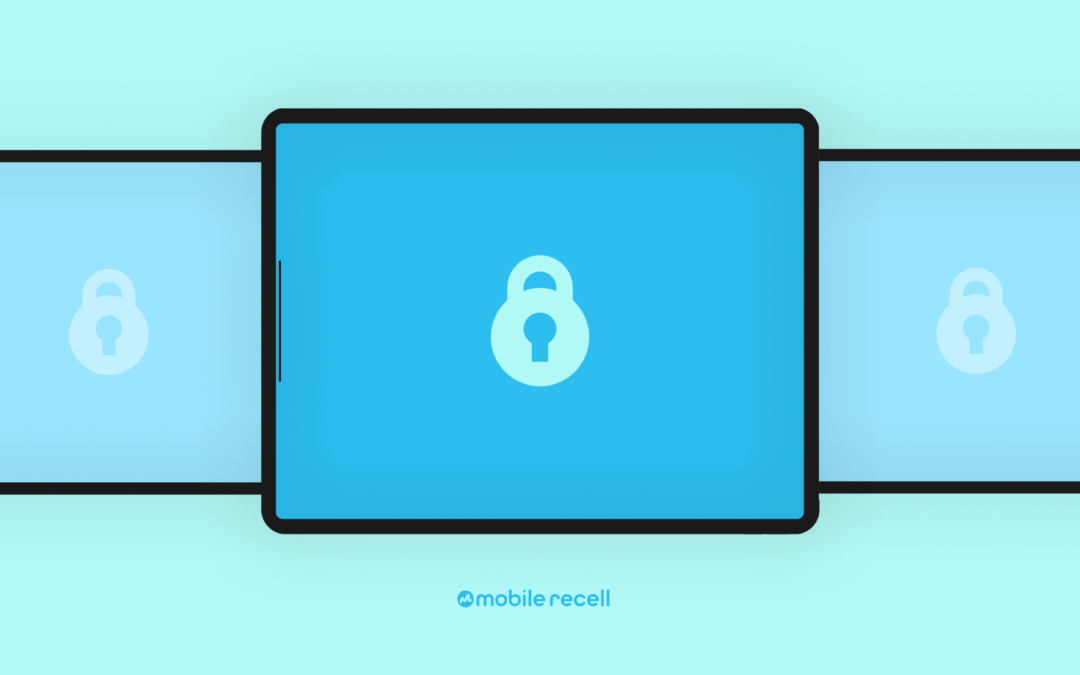What is it, and why is it important?
A faster, unique method to handle device data.
In 2019, only 4% of data breaches involved data protected by encryption.⁵
When considering how to handle your company’s mobile device data, encryption is a favored and effective method to use. There is a great security benefit to encrypting data on mobile devices — in fact, your company may already be doing it to add another layer of security to the organization.
Cryptographic Erasure (CE) is one of three methods of handling data, and it is a great option to consider due to its high efficiency and effectiveness. However, certain factors need to be considered when deciding if this process is suitable for your company and your mobile device recovery solution.
What are Encryption and Cryptographic Erasure?
Cryptographic Erasure (CE) dates back to 1996 when it was first publicly proposed in a paper titled “A Revocable Backup System,” published in the USENIX Security Symposium.²It involved a backup tape scheme in which backed-up data was encrypted with a periodically refreshed key. Every time the key changed, old backups were lost without requiring any modifications to the tape itself.³
Encryption is the process of converting device data into a code to prevent unauthorized access. An algorithm then encodes the data so it can only be deciphered with a corresponding encryption key. Essentially, the device’s data is locked away, and a key is provided to unlock it.²
Cryptographic Erasure roughly involves encrypting a device’s stored data first, and when it is time to delete it, discarding the encryption key needed to access that data.³A native command is used to erase the encryption key for that stored data. This makes the device’s storage impossible to decrypt and renders the data unrecoverable.²
Assuming the storage device’s data is already encrypted , there are three steps to proper implementation of Cryptographic Erasure:
- Find and overwrite crypto keys and passwords.
- Encrypted storage on a mobile device has its encryption key removed through API call.
2. Verify full encryption of media.
- Utilized software must verify the old key has been removed and is unrecoverable.
3. Create a tamper-proof certificate.
- The CE software produces the certificate, confirming the encryption key has been removed from a specific device. The certificate is documentation of CE for future data audits.
The National Institute for Standards and Technology (NIST) and the International Standards Organization (ISO) are two industry data-destruction standards that recommend Cryptographic Erasure as a secure data destruction technique. This method has also been promoted as a faster alternative to traditional data destruction mechanisms.²
What are the pros and cons?
Though a cryptographic wipe is an attractive method to handle data, it does have some pros and cons, associated with it that need to be considered.¹
Pros:
- It takes only a few seconds to complete and can be done while devices are in transit or if the organization requires quick handling of data. It is faster than other traditional overwriting methods utilized in Department of Defense (DoD) or NIST data destruction.
- Proper implementation of the process can render data unrecoverable.
- Compared to traditional overwriting methods such as DoD and NIST, this option is likely less expensive.
- Erased devices are still usable after CE, keeping their integrity and retaining warranties if applicable.
Cons:
- Cryptographic Erasure doesn’t actually destroy data; it just makes it inaccessible, meaning future technology could potentially recover the data since it was never destroyed.
- It requires all data to be encrypted beforehand, which may not apply to all of a company’s devices or may require a transition by the company to encrypted data on all devices.
- Even when primary encryption keys are deleted, there are often backups to that key, leaving the possibility for a breach.
- Human error and broken keys could limit the success of the erasure.
- Self-encrypting storage drives can have implementation issues with this process if a company tries to use them.
- Encryption keys must be securely stored and managed–without proper storage and management of these keys, data is vulnerable to attack.
- The unpredictable pace of technological advancements could render this process unreliable or ineffective in a few years’ time.
Overall, Cryptographic Erasure is a very efficient and effective method of handling data, but understanding the trade-offs associated with it is critical if this is the only data-handling method used by a company. For the best results, pair this method with a method of data destruction like DoD or NIST overwriting methods to maximize data security.
Is Cryptographic Erasure enough for your company?
Encrypting data always provides an extra layer of security to your company data, and Cryptographic Erasure is a proper way to handle encrypted data when corporate-owned devices are retired.
However, as mentioned above, Cryptographic Erasure does not erase data; it simply renders it inaccessible by removing the keys needed to access it. This leaves room for possible data breaches because the data was never destroyed in the first place.
All companies have unique situations and needs, and Cryptographic Erasure may be the best solution for an organization. If encryption keys are managed correctly after devices are retired, it can be a reliable method of handling corporate data.
Encryption and Cryptographic Erasure are great options to utilize if devices are to stay in your company control, but once devices leave the organization or are disposed of, they have weaknesses.⁴
If possible, you should always take another step and pair it with another data-overwriting method, like DoD or NIST data destruction, to maximize security.
Weighing company risk tolerance and situational needs is critical when considering Cryptographic Erasure for your company.
Efficiency & data security for mobile devices
When retiring your corporate-owned mobile devices, you always need to choose what best fits your organization’s needs. Cryptographic Erasure is a popular method of handling data due to its efficiency and effectiveness.
However, CE should not be the only method utilized to handle corporate data. It is always recommended to pair CE with a strong, traditional overwriting process, like DoD or NIST data destruction, to maximize data security.
Mobile reCell provides the only software-driven solution for corporate-owned mobile device recovery. We offer a software-driven, automated process that follows, verifies, and certifies DoD 5220.22 and NIST 800–88 standards for data destruction. Mobile reCell’s data-wiping process also includes ADISA-credited Cryptographic Erasure methods for devices. Our proprietary software provides visibility and detailed reporting through the entire device recovery process — device shipment tracking, functionality testing, NIST 800–88-compliant data destruction, cosmetic condition grading, and reselling or recycling.
Want to Learn More?
Visit us at mobilerecell.com to learn more about a mobile device recovery solution for your company.
Follow Us On Social Media!
Mobile reCell Linkedin | Mobile reCell Twitter |Mobile reCell Facebook
Sources:
- Blancco. What is Cryptographic Erasure (Crypto Erase)? https://www.blancco.com/resources/article-what-is-cryptograhic-erasure/
- Blancco. When are Encryption an Cryptographic Erasure Not Enough? https://www.blancco.com/resources/bp-when-are-encryption-and-cryptographic-erasure-not-enough/
- DARKReading. Cryptographic Erasure: Moving Beyond Hard Drive Destruction. https://www.darkreading.com/edge/cryptographic-erasure-moving-beyond-hard-drive-destruction/a/d-id/1333492
- White Canyon Software. Crypto Erase and Data Erasure. https://www.whitecanyon.com/articles/crypto-erase-and-data-erasure
- Senetas. Why 2019 needs to be the year of encryption. https://www.senetas.com/will-2019-be-the-year-of-encryption/


